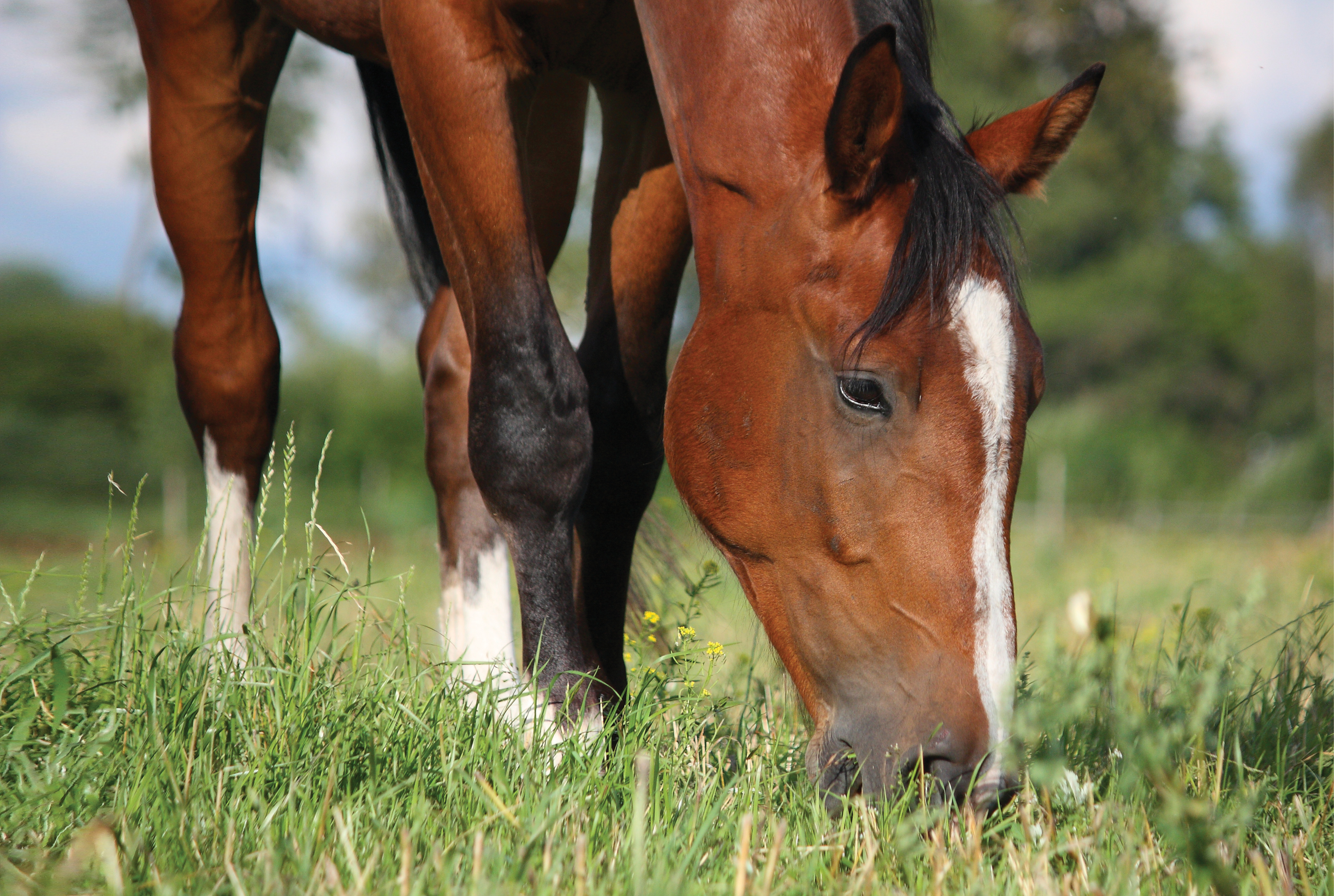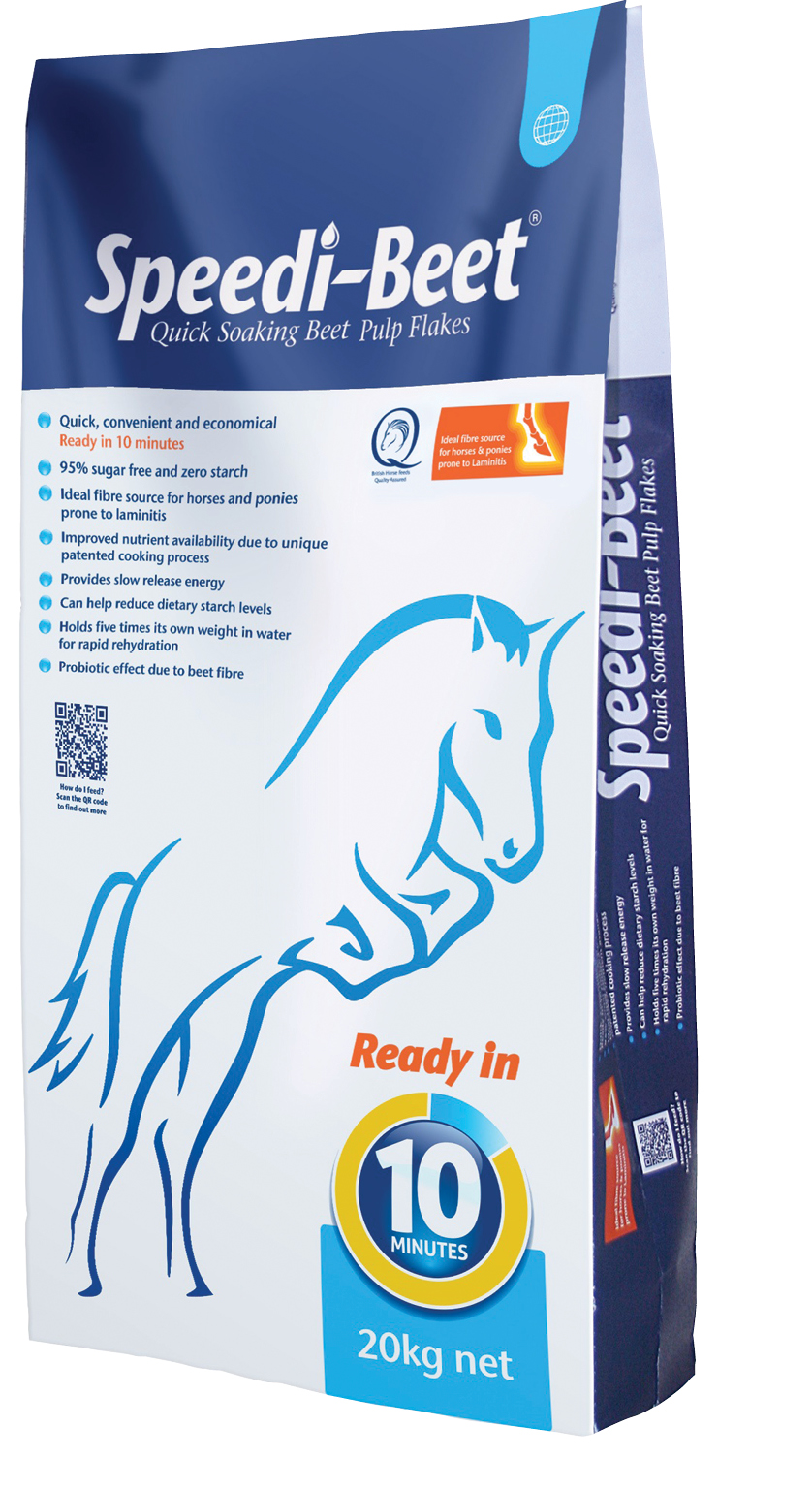Is your horse overweight? Does he have some fatty spots that don’t look quite right? Maybe you’ve tried to cut his feed back but it just doesn’t seem to make a difference.
It could be that your horse is struggling with insulin resistance. Insulin resistance is similar to diabetes in people and can bring with it some not-so-pleasant consequences. A diagnosis doesn’t spell the end for you and your horse’s partnership; you just might need to do a little more maintenance.
[RELATED: STOP FEEDING GRASS CLIPPING]

Insulin-Resistance Explained
Insulin resistance occurs when a horse loses sensitivity to insulin, the hormone that regulates sugar metabolism. Normally, when a healthy horse eats, glucose from the food enters the bloodstream. Insulin is released and is the body’s messenger, alerting it that there’s glucose, ready to be stored and used as energy or to replenish the body.
In insulin-resistant horses, the body doesn’t get the message. Glucose stays in the bloodstream and more insulin hormone is produced to try to get it out. If the blood-insulin levels stay too high too often, a horse develops insulin insensitivity, and insulin resistance leads to several long-term health issues.
The most immediate concern is weight that puts strain on his joints and back. A horse with insulin resistance can also develop equine metabolic syndrome (EMS).
A hallmark of EMS is laminitis—which is painful to experience and expensive to treat. It can also come with hyperlipemia. This occurs when a horse has a lot of stored fat and too much of it is released into the bloodstream all at once in response to the sickness. It overwhelms his liver, making him sicker and can cause a less serious illness to escalate quickly.
If you suspect your horse has an issue, your vet will be able to do blood tests to look for elevated blood glucose levels and/or insulin sensitivity. Look for irregular fat deposits along his neck, rump, or above his eyes. Also watch for excessive urinating, unquenchable thirst, and unexplained soreness or unsoundness, which could be laminitis.
The Fixes
A proper diet and appropriate exercise reduces the likelihood your horse will have an issue. If he’s already insulin resistant, you’ll need to change his diet and exercise routine, as his soundness and conditioning allows, to reduce damage.
• Manage volume. If your horse is overweight, work with your veterinarian to develop a weight-loss plan. Sudden and excessive feed restriction can actually cause your horse to retain fat as his body will think he’s starving.
Purchase a scale or weigh hay rations to ensure that you’re feeding enough, as flake size varies. As a general rule, a non-performance horse will need around 1.5% of his ideal body weight in forage each day (1,000 pounds body weight equals 15 pounds of feed). Check with your vet to make adjustments for your horse’s age, body score, activity level, and living conditions. Use a slow feeder if your horse needs to stay occupied.
• Inspect forage. Have your hay analyzed to learn its carbohydrate ratios. Feed high-fiber, low-sugar hay as it’ll keep his insulin levels stable. Most mistakenly think grass hay is lower than alfalfa; it’s best to have it tested to be sure.
Manage grazing and only let him out for short periods and at certain times of the year. New spring grass often has high sugar content, and longer grass also has higher sugar content than shorter pasture. Use a grazing muzzle to further limit consumption or turn your horse out in a dry lot.
• Feed wisely. Most insulin-resistant horses don’t need extra calories from supplements. Some, such as beet pulp, blocks, licks, and bagged feeds can help you make up for incomplete nutrients or forage if your horse’s diet is lacking. Read labels and look for feed that’s high in fiber and low in starch as this’ll keep blood-glucose levels stable.

Using Ration Balancers
Ration balancers can supplement vitamins and minerals if your horse isn’t getting it through his forage. A beet-pulp supplement provides fiber when there’s not enough in his forage or for an older horse that can’t chew well. The ready-made product is easier to store and prepare than making your own. Other brands also have specialized feeds for insulin-sensitive horses. Avoid treats high in sugar, including apples and carrots.






